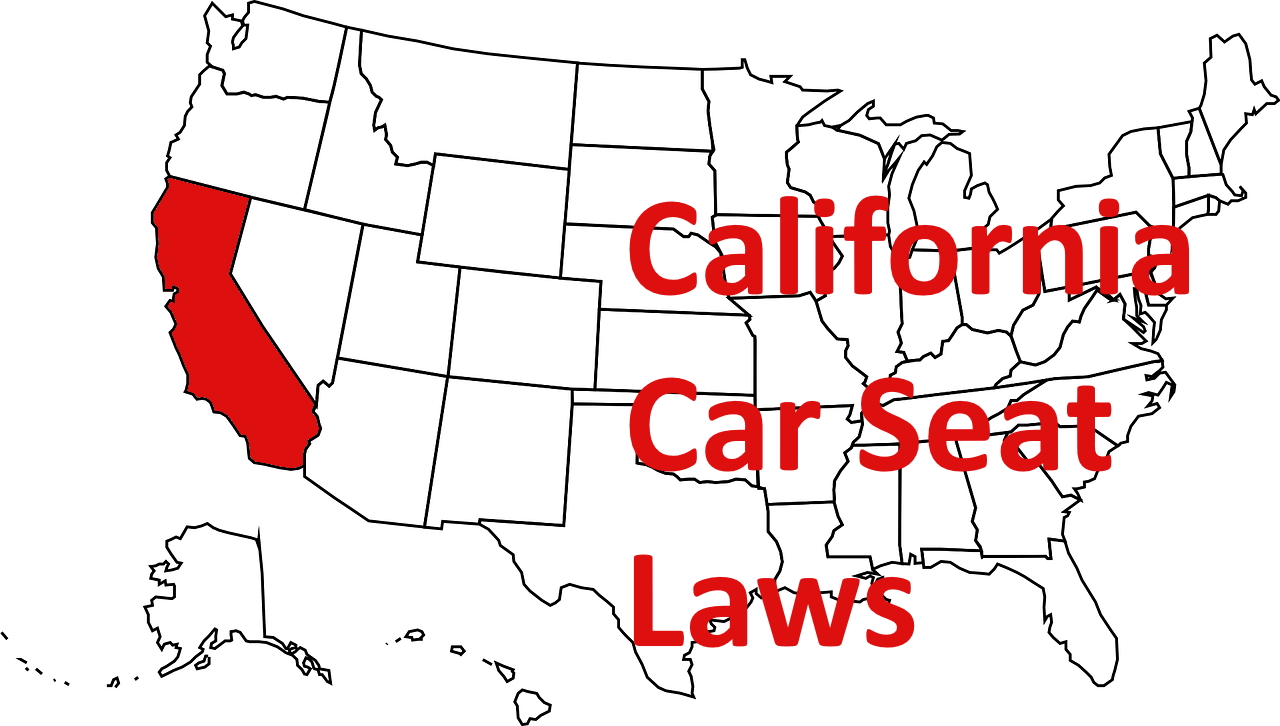Editor’s note: This article was updated in 2022 to include a relevant FAQ section.
In California car seat law, a child under eight years old must be properly secured in an appropriate car seat or booster seat in the rear seat of a motor vehicle travelling on a highway. The car seat or booster seat must be properly installed, must be the correct size for the child, and must meet applicable federal motor vehicle safety standards.
Babies and Children Up to Two Years Old
A child under two years old must be properly secured in a rear-facing car seat in the rear seat unless the child weighs at least forty pounds or is at least forty inches tall. The car seat must be the correct size for the child and must meet applicable federal motor vehicle safety standards.
Children Two to Eight Years Old
A child between the ages of two and eight years old must be properly secured in an appropriate car seat in the rear seat until the child is at least 4’9” tall, when the child may be secured in a booster seat with a seat belt.
Children Eight to Sixteen Years Old
A child between the ages of eight and sixteen years old must be properly secured in an appropriate car seat, booster seat, or seatbelt.
Children Over Sixteen Years Old
A child over the age of sixteen must be secured in a safety belt that meets applicable federal motor vehicle safety standards.
Penalties for Violations
You may be fined $100.00 for a first offense or $250.00 for a second offense, which may be reduced or waived if you are economically disadvantaged. You may be ordered to provide proof of completion of a program instructing you how to properly install and use car seats and booster seats and proof that your car seat or booster seat meets applicable federal safety standards.
Law Enforcement May Stop Your Vehicle for a Suspected Violation
If a law enforcement officer reasonably suspects a violation and your child is within the age specified by law, you may be stopped and issued notice to appear in court.
Sales of Car Seats or Booster Seats
If you sell a car seat or booster seat that was involved in a motor vehicle accident, you may be fined one hundred dollars ($100.00).
Exemptions
Your child may be exempt if you can prove that it is impractical for your child to use a car seat or booster seat due to physical unfitness, medical condition, or size and no appropriate special needs car seat or booster seat is available.
Your child may be secured by a safety belt instead of a car seat or booster seat if he or she is transported in an authorized emergency vehicle because of a life-threatening emergency and no car seat or booster seat is available.
You child may wear a lap safety belt in the rear seat of your vehicle if your vehicle does not have combined lap and shoulder safety belts and if he or she weighs more than forty pounds.
Your child may ride in an appropriate car seat or booster seat in the front seat of your vehicle if: your vehicle has no rear seats; the rear seats are side-facing or rear-facing; a car seat or booster seat cannot be properly installed in the rear seat; all rear seats are occupied by children under eight (8) years of age; or you can prove that your child has a medical condition preventing him or her from riding in the rear seat. Your child may not ride in the front seat with an active front passenger airbag in a rear-facing car seat.
Car Seat Safety
Types of Child Restraint Systems
Rear Facing Car Seats vs Forward Facing Car Seats
As stated above, California law requires that children remain in rear-facing car seats until they are age 2 or either weigh more than 40 lbs or are more than 40 inches tall.
However, the American Academy of Pediatrics (AAP) has issued guidelines encouraging parents to keep children in rear facing car seats as long as possible. Many rear-facing car seats accommodate children who are larger than the California limits. AAP recommends that children who are older than 2 years old are advised to continue use of the rear-facing as long as they fit within the car seat manufacturer’s recommended size for their car seat.
Generally, the AAP has moved away from age-specific recommendations and toward criteria related to the height and weight of the child.
Infant Car Seats and Convertible Car Seats
Infant car seats are rear-facing child restraint systems designed for infants which are comprised of a base and a car seat that is easily detachable from the base.
Convertible car seats are installed using a LATCH system or the vehicle seat belt. They can be used in both rear and forward facing positions. Children in convertible car seats are secured by a harness system.
Vehicle code requires that vehicles are equipped with the LATCH system.
Booster Seats
In California, child passenger safety law requires children taller than 4 feet 9 inches may use a booster seat. Belt-positioning booster seats are those that make use of vehicle seat belts threaded through a mechanism to guide the seat belt to fall in a safe position over the child’s hips and shoulder.
Passenger Safety for Older Children
While California law requires children up to age eight to be restrained in an appropriate car seat or booster seat, it does not specifically specify when a child may discontinue the use of a booster seat and use a vehicle seat belt without a booster seat.
As vehicle seat belts are designed for full-sized adults, it is important that children remain in a belt-positioning booster seat until they are big enough to safely use a vehicle seat belt.
FAQ
What is California booster seat law?
California car seat law states that drivers must secure children over two years old and more than 40 inches tall in an appropriate car seat or a booster seat for their height and weight.
What is California car seat law for rear facing car seats?
California car seat law states that children under two years old who are less than forty pounds and up to 40″ tall must ride in a rear facing car seat in the back seat of a vehicle.
When can a child sit in the front seat in California?
The NHTSA recommends children under 12 years old ride in the back seat of a vehicle. California car seat law makes some exceptions. A child can ride in the front seat if there are no back seats in the vehicle or the rear seats are rear facing or side facing. Children can ride in the front seat if their child passenger restraint system cannot be correctly installed in the back seat or if your child has a medical condition that keeps them from being secured in the back seat safely. They can also sit in the front seat if the rear seats are all occupied by children under 8 years old.
* Ms. Blake is licensed in the state of Maryland. The information provided in this article does not constitute legal advice and does not create an attorney-client relationship.

